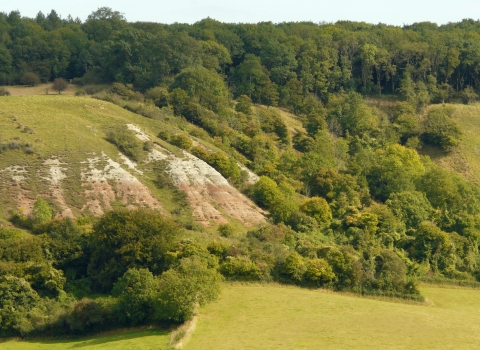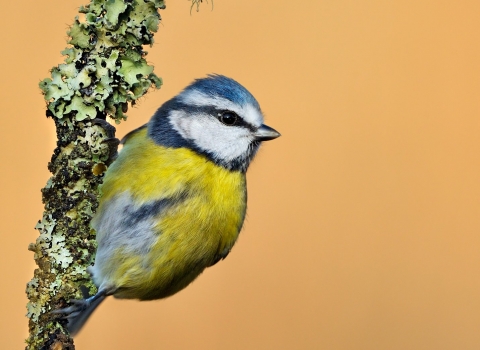
Gilling Down - Rosie Winch
Know before you go
Dogs
Visit the 'Dog walking on reserves' page in the Contact section for more information.
When to visit
Opening times
Open at all timesBest time to visit
April to JulyAbout the reserve
If you visit in summer the species rich calcareous grassland contains a wide variety of flowers. These include Salad Burnet, Selfheal, Wild Thyme, Common Rock-rose, Horseshoe Vetch, Carline Thistle and sometimes Autumn Gentian in the latter part of summer. Amongst the many grasses here are the fine leaved Sheep's Fescue and the large seeded and very distinctive Quaking-Grass.
Pyramidal, Bee, Buttefly and Autumn Ladies Tresses orchids are occasionally recorded.
The scrubby areas are dominated by Blackthorn, Hawthorn, Brambles and Wild Privet, with lots of the climber, Wild Clematis, also known as Old Man’s Beard, scrambling through the bushes. The clumps of trees on the reserve are mainly composed of Ash and Field Maple.
This is a great place to come and see butterflies during high summer. Look out for Meadow Brown, Gatekeeper, Brown Hairstreak, Purple Hairstreak, Green Hairstreak, Grizzled Skipper, Dingy Skipper, Brown Argus, Common Blue, Chalk Hill Blue and also the Large Blue which has colonized the reserve from nearby sites where it has been reintroduced.
Amongst the many moths that make this reserve their home are several rather scarce ones, including the Chalk Carpet, Small Eggar and the pale metallic green Cistus Forester whose caterpillars feed on Rock Rose.
Other notable insects present are the nationally scarce Dotted Bee Fly and the Hill Cuckoo Bee.
The scrub and woodland edges here provide good breeding habitat for a wide range of birds like Blackcap, Whitethroat, Chiffchaff and Willow Warbler. Before the national decline in their numbers Nightingales bred here regularly, and they still visit occasionally. Green Woodpeckers feed on ants in the reserves grasslands and breed in adjacent woodlands. Sparrowhawks and Buzzard are just about always in view along the scarp.
Reserve conservation management – Livestock grazing and control of scrub to stop it encroaching on the grassland.
History and Archaeology - In 1815 the Earl of Ilchester, who owned this land at the time, commissioned one William Smith to dig for coal. A pit was commenced at the base of the abrupt Keuper Marl escarpment but no coal was found. Records of the rocks encountered during the excavation provide a valuable insight of the underlying geology. An archaeological/historic landscape survey in May 1994 identified the south-western corner of the reserve as the possible site of the pit, however others suggest that the base of main central scrub block is more likely. There are also records of medieval gypsum mining, thought to have taken place near the north east corner of the site.
Did you know the 1842 Tithe Record shows that the site name was formerly Gilling’s Down, still pronounced "Jilling’s" by locals. Also the eroded slopes of the Compton Dundon Scarp are known locally as the Red Rocks.



